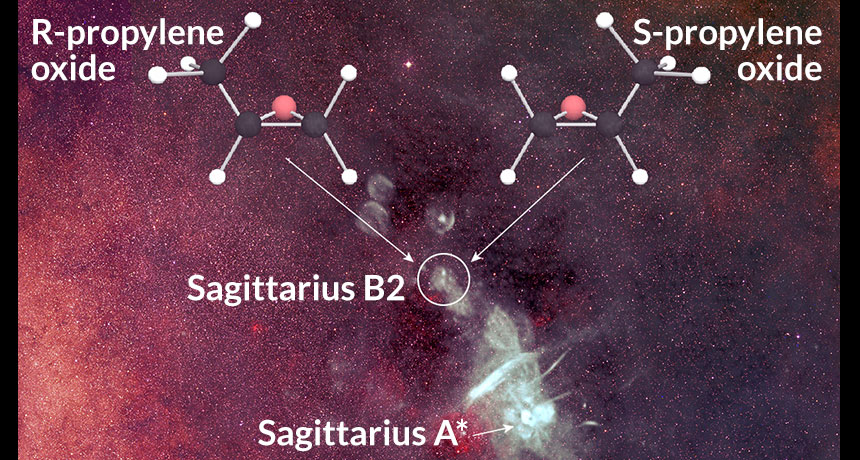Molecular handedness found in space
Propylene oxide’s two mirror-image forms could be clue to biological chirality

MOLECULE CLUE A gas cloud (Sagittarius B2) near the center of the galaxy (Sagittarius A*) is loaded with propylene oxide, a molecule that comes in mirror-image configurations.
B. Saxton, NRAO/AUI/NSF from data provided by N.E. Kassim, Naval Research Laboratory, Sloan Digital Sky Survey







